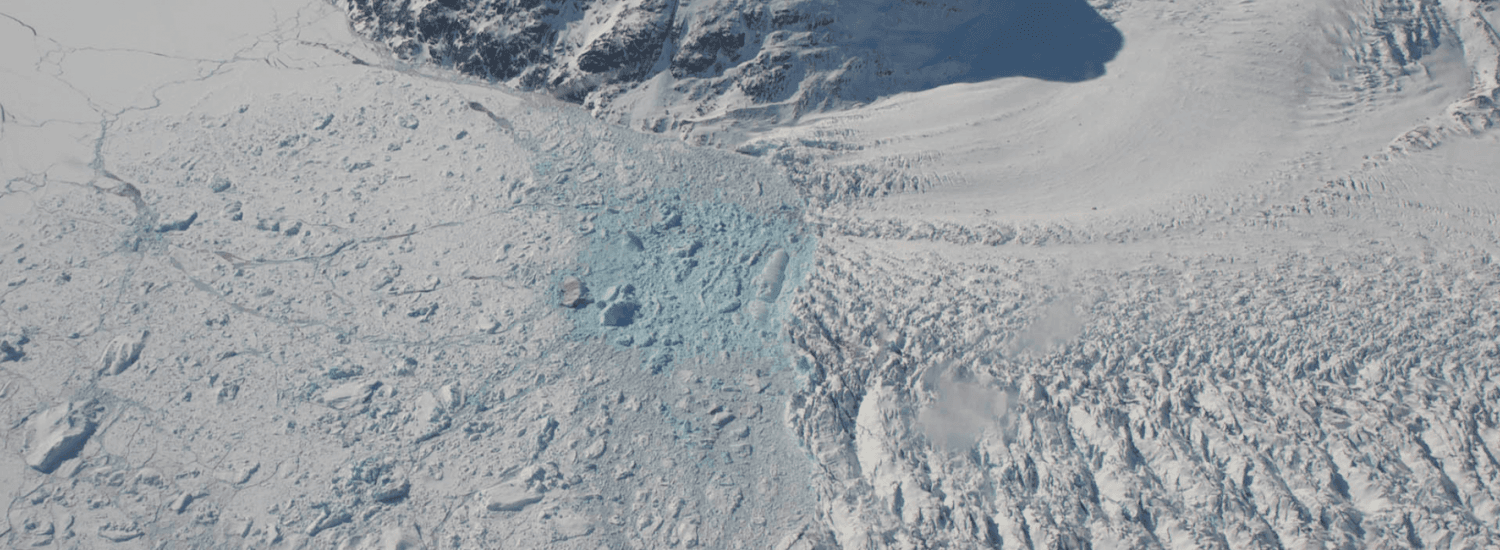Physics of a glacial ‘slushy’ reveal granular forces on a massive scale
CIRES researcher co-authors new study uncovering giant-scale iceberg interactions

The laws for how granular materials flow apply even at the giant, geophysical scale of icebergs piling up in the ocean at the outlet of a glacier, scientists have shown.
The Proceedings of the National Academy of Sciences (PNAS) published the findings, describing the dynamics of the clog of icebergs — known as an ice mélange — in front of Greenland’s Jakobshavn Glacier. The fast-moving glacier is considered a bellwether for the effects of climate change.
CIRES researcher Ryan Cassotto, formerly with the University of New Hampshire, is a co-author on the study.
“We’ve connected microscopic theories for the mechanics of granular flowing with the world’s largest granular material — a glacial ice mélange,” says Justin Burton, an assistant professor of physics at Emory University and lead author of the paper. “Our results could help researchers who are trying to understand the future evolution of the Greenland and Antarctica ice sheets. We’ve showed that an ice mélange could potentially have a large and measurable effect on the production of large icebergs by a glacier.”
This story was adapted by Emory University communications. Read the full story here.